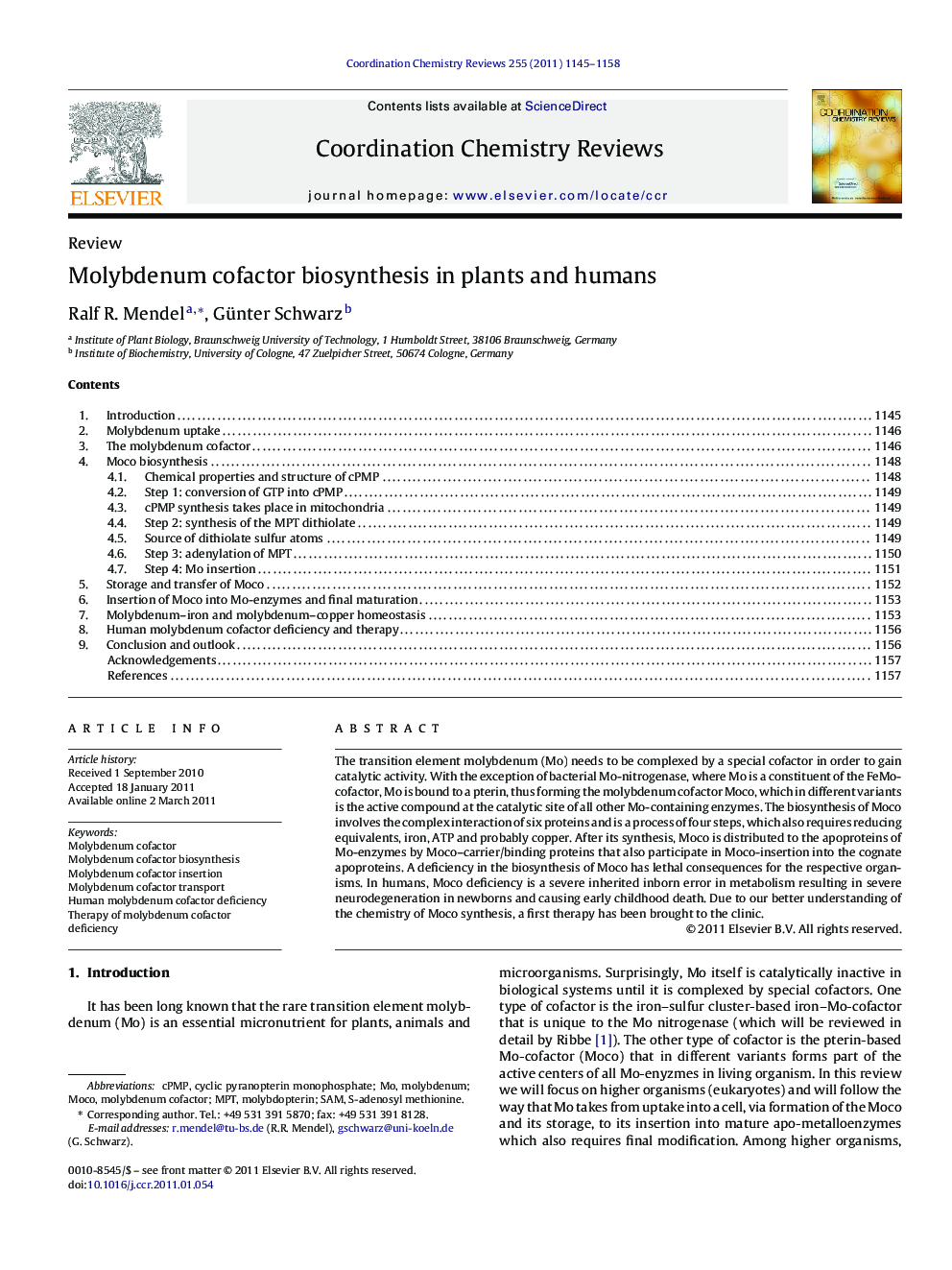| Article ID | Journal | Published Year | Pages | File Type |
|---|---|---|---|---|
| 1300170 | Coordination Chemistry Reviews | 2011 | 14 Pages |
The transition element molybdenum (Mo) needs to be complexed by a special cofactor in order to gain catalytic activity. With the exception of bacterial Mo-nitrogenase, where Mo is a constituent of the FeMo-cofactor, Mo is bound to a pterin, thus forming the molybdenum cofactor Moco, which in different variants is the active compound at the catalytic site of all other Mo-containing enzymes. The biosynthesis of Moco involves the complex interaction of six proteins and is a process of four steps, which also requires reducing equivalents, iron, ATP and probably copper. After its synthesis, Moco is distributed to the apoproteins of Mo-enzymes by Moco–carrier/binding proteins that also participate in Moco-insertion into the cognate apoproteins. A deficiency in the biosynthesis of Moco has lethal consequences for the respective organisms. In humans, Moco deficiency is a severe inherited inborn error in metabolism resulting in severe neurodegeneration in newborns and causing early childhood death. Due to our better understanding of the chemistry of Moco synthesis, a first therapy has been brought to the clinic.
Graphical abstractFigure optionsDownload full-size imageDownload high-quality image (181 K)Download as PowerPoint slideResearch highlights► Biosynthesis of the pterin-based molybdenum cofactor involves four steps. ► Six proteins catalyze pyranopterin synthesis, sulfur transfer and metal insertion. ► Iron, S-adenosyl methionine, ATP, cysteine and probably copper are needed. ► Moco is distributed by specific carrier/binding proteins to apo-enzymes. ► Moco deficiency is a severe neurodegenerative disorder; a first therapy is available.
